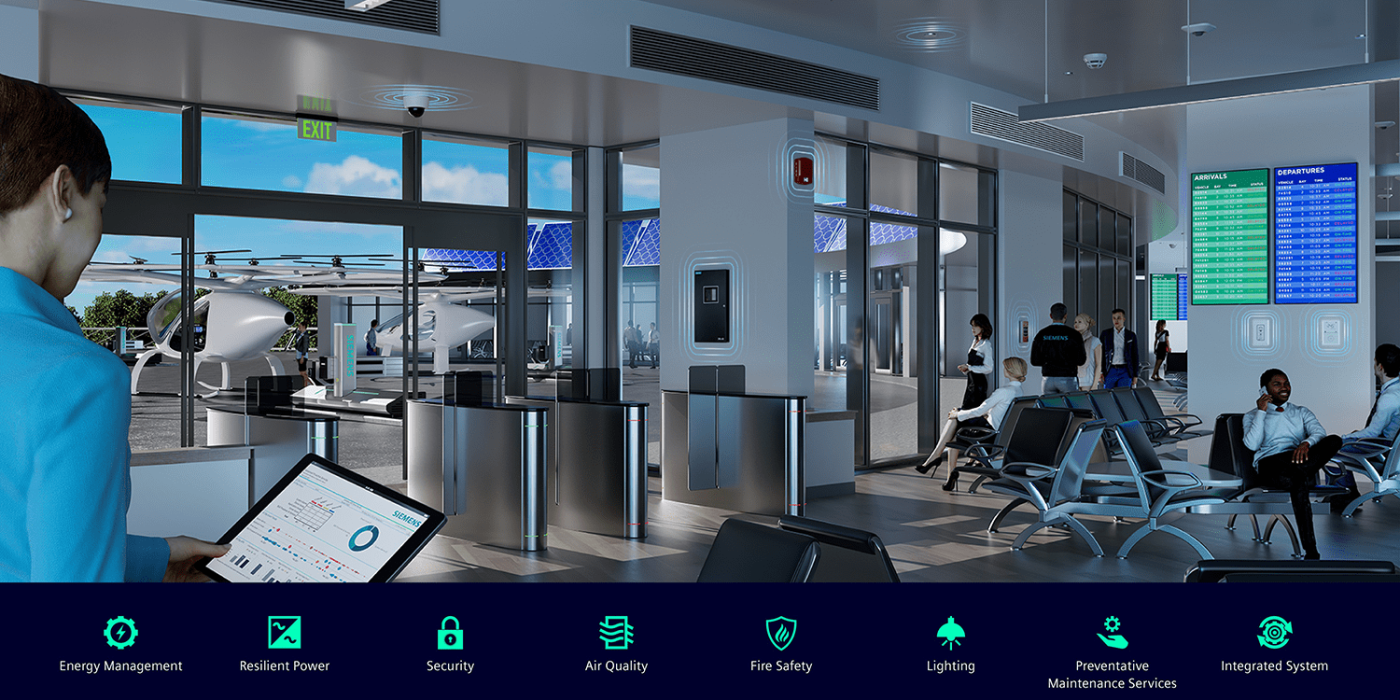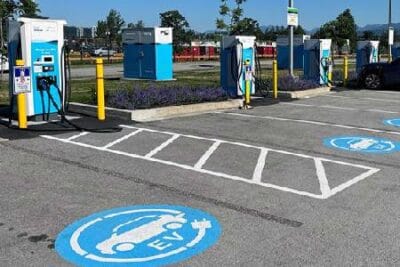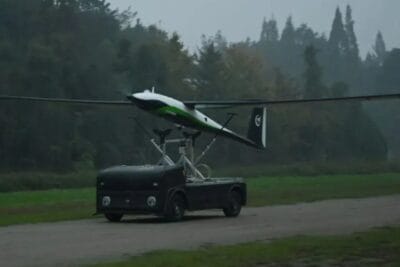Siemens & Skyway design eVTOL landing pads
The development of take-off and landing sites for vertically taking off and landing electric aircraft such as air taxis and drones is the goal of a new cooperation between Siemens and Skyway. To this end, both companies want to determine the electrical and digital infrastructure required to operate such vertiports.
As part of their collaboration, Siemens and Skyway are studying the energy requirements of vertiports and developing sustainable power supply solutions, standardised charging procedures and a higher-level system to support flight operations, according to Siemens. The German group believes innovation in vertiport infrastructure is critical to the future scalability of electric vertical take-off operations.
Skyway has extensive expertise in airspace mission planning and management as well as air traffic control and unmanned aircraft operations, while Siemens has extensive infrastructure expertise in electrification, electric vehicle charging and facility operations. Thus, both companies want to contribute their strengths to drive the development of the Vertiports – including research, development, planning and participation in construction and operation.
This is an important function, especially in operations: both partners first want to “design and develop an end-to-end eVTOL charging process by evaluating charging, energy and software requirements to ensure reliable and efficient operation”.
“It is exciting for Siemens to contribute to the evolution of the Urban Air Mobility Industry,” said John Kasuda, Head of Airports at Siemens Smart Infrastructure North America. “The development and efficient operations of vertiports will require innovative solutions to meet the expected demands of fast aircraft turnaround times and a network of varying landing facilities.”
“Sustainable energy solutions will be the foundation and the necessity for adoption of Urban Air Mobility with the electrification of eVTOL aircraft,” says Clifford Cruz, CEO of Skyway. “Combining our companies’ resources and industry foresight can influence vertiport construction efforts and general UAM solutions on an industry-wide scale while setting a new precedent for modern transportation.”





0 Comments